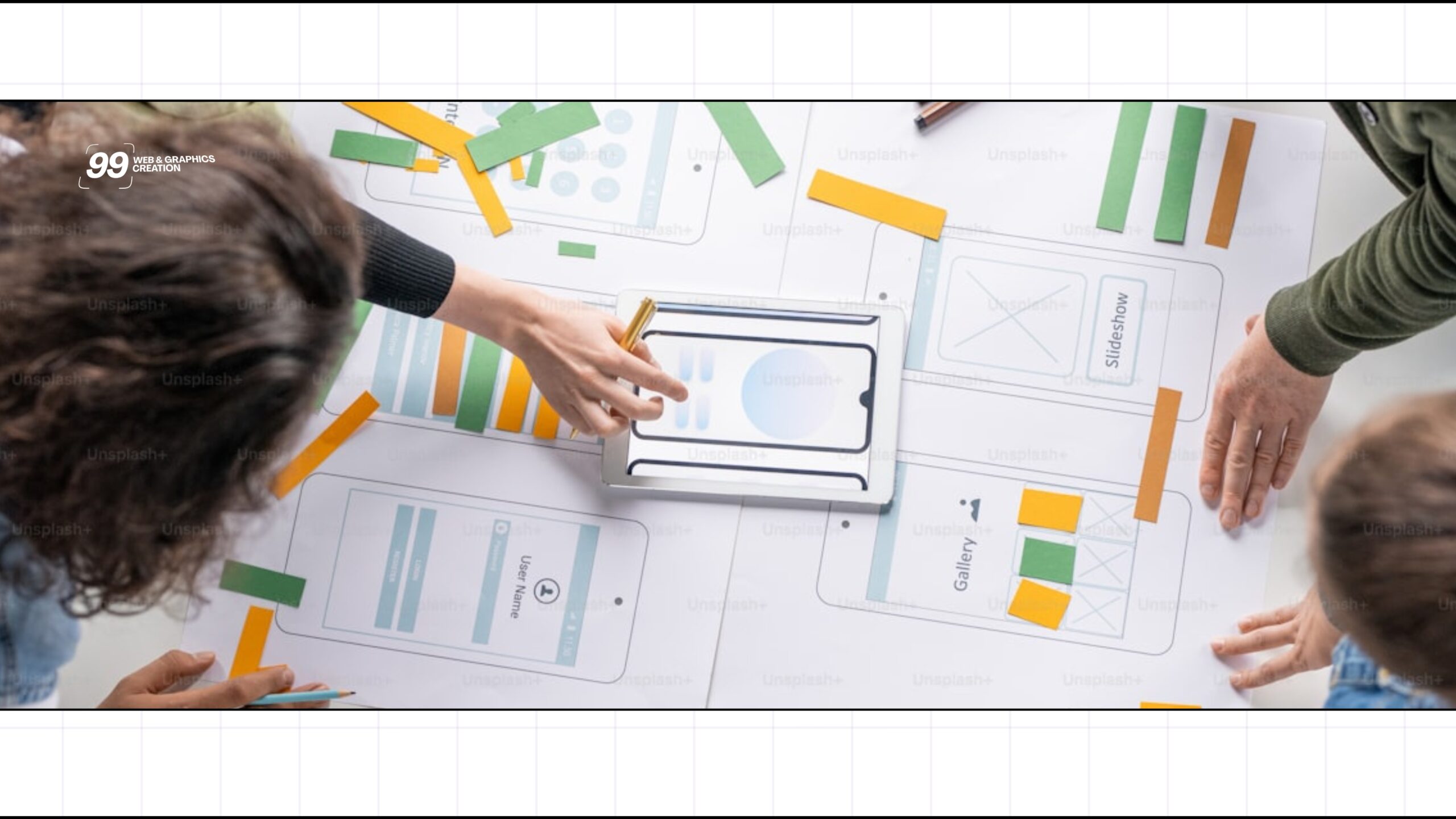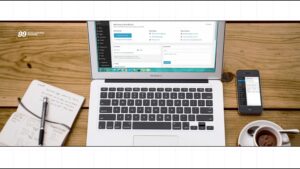First impressions are critical. Whether you are a business owner developing a product or a creative professional building a website, the way people experience your platform will either encourage them to stay or prompt them to leave.
This is where two important disciplines come into focus: User Interface Design and User Experience Design. Both are essential, yet they serve distinct purposes.
Unfortunately, many individuals confuse these terms or use them interchangeably. This misunderstanding often leads to digital products that may appear beautiful on the surface but lack the depth to provide value or meet user expectations.
In this article, we will define UI and UX clearly, explore how they differ, and explain why they are both critical to creating effective and memorable digital products.
What Is UI Design?
User Interface (UI) Design refers to the visual layout and interactive elements that users engage with on a digital platform. These elements include buttons, icons, fonts, images, color palettes, spacing, transitions, and every other visual component a user sees on the screen.
In essence, UI design addresses this question: What does the user see when interacting with the product?
A well-executed UI design not only creates a visually pleasing experience but also improves usability. It ensures that users can intuitively navigate the interface without confusion. Every visual choice – whether it is a button shape or a font size – must be made with clarity and brand consistency in mind.
To illustrate, consider entering a modern and elegantly designed office. The furniture is well arranged, the lighting is comfortable, and everything looks clean and organized. That is what UI design does. It creates an environment that looks inviting and easy to interact with.
What Is UX Design?
User Experience (UX) Design focuses on the entire journey a user takes when engaging with a product or service. It considers how easy or difficult it is for the user to complete tasks, how intuitive the navigation feels, and how the experience influences their emotions and satisfaction.
UX design answers the question: How does the user feel throughout the interaction?
Unlike UI design, which deals with appearance, UX design is process-driven. It involves research, wire framing, journey mapping, usability testing, user feedback, and iteration. The goal is to understand user needs and design solutions that are seamless, logical, and enjoyable.
Let us return to the office analogy. If UI is the aesthetic appeal of the office, then UX is the overall functionality. It includes how comfortable the seating is, how easy it is to find the restroom, how smoothly the elevator works, and whether the receptionist can assist you efficiently. UX is not concerned with appearance. It is focused on utility, emotion, and flow.
The Essential Differences Between UI and UX
UI is the visual finish. UX is the purposeful structure.
UI brings people in. UX ensures they stay.
UI is the stage and lighting. UX is the story and performance.
Why Both UI and UX Matter
A digital product that looks appealing but lacks functionality is like a beautiful hotel with no running water. Conversely, a highly functional product that looks outdated or cluttered may cause users to lose trust or feel overwhelmed.
To build products that perform well and leave lasting impressions, you must invest in both the appearance and the experience.
Here are key reasons why both UI and UX are important:
1. Retention of Users
Users will not return to a product that looks great but is difficult to use. People value convenience and clarity. A strong UX ensures that your users can achieve their goals without unnecessary friction.
2. Building Brand Trust
Your UI often forms the first impression a user has of your brand. An outdated or inconsistent interface may raise doubts. A clean, intuitive design communicates professionalism and reliability.
3. Boosting Conversions
When a product provides a seamless experience and visual appeal, users are more likely to take action. Whether the goal is to fill a form, make a purchase, or sign up for a service, UI and UX working together increase conversion rates.
4. Encouraging Loyalty
Satisfied users return. If your product not only works well but also looks and feels right, users will remember the experience and recommend it to others.
Common Mistakes Businesses Make
Mistake One: Prioritizing Appearance over Function
Many entrepreneurs focus solely on how their website or app looks, overlooking how it functions. A product might win design awards but still confuse or frustrate users.
Solution: Balance design and usability. Make sure the product is not only beautiful but also effective in helping users achieve their goals.
Mistake Two: Ignoring User Research
Creating a design without understanding your audience is risky. You may be designing for yourself instead of for the people who will actually use the product.
Solution: Take time to speak with your users, study their behavior, and gather insights. This data should guide your design process from the start.
Mistake Three: Failing to Test
Many products are launched without adequate testing. Without user feedback, it is impossible to know where people are getting stuck or what frustrates them.
Solution: Conduct usability tests early and often. Observe how users navigate your product and make necessary adjustments based on real feedback.
Mistake Four: Copying Other Brands Blindly
What works well for another brand may not work for yours. Each business has its unique voice, audience, and objectives.
Solution: While inspiration is valuable, always tailor your design to suit your own brand identity and user needs.
How to Combine UI and UX in the Design Process
If you are a designer or business owner, here is a step-by-step approach to integrating UI and UX effectively:
Start with Research
Understand your target users. What are their goals, challenges, and expectations? Create user personas and outline their journey.
Design the Experience First
Use wireframes and flow diagrams to build the foundation of your product. Map out the paths users will take and ensure functionality comes first.
Build the Interface on Top
Once the structure is in place, apply a visual layer that reflects your brand identity. Use consistent colors, typography, spacing, and interactive elements.
Test, Learn, and Improve
Share your prototype with real users. Collect honest feedback. Watch how users interact with the product and identify areas for improvement. Repeat this process until both the UI and UX are seamless.
Collaborate Across Disciplines
Business owners should work with designers who understand both the visual and experiential aspects of product design. Designers should remain open to feedback and prioritize teamwork. Collaboration results in better outcomes.
Remember, UI and UX are not rivals. They are two sides of the same coin. While one draws people in through visual appeal, the other ensures those people enjoy the experience and return. Whether you are creating a personal brand website, an online store, or a mobile app, success lies in the fusion of both design and experience. A well-designed product speaks clearly, functions smoothly, and leaves a lasting impact.
Next time you launch a project, ask yourself not just how it looks, but how it works and how it makes the user feel. Do you think it is more difficult to master UI or UX? Share your thoughts in the comments. Let us learn together.




